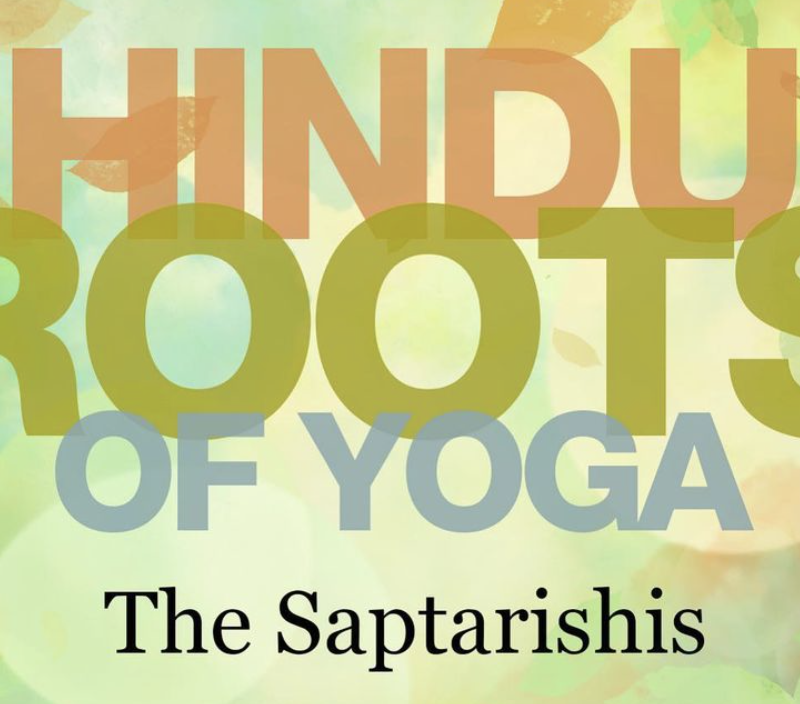
I’ve practiced yoga on and off for years, but only started a serious, dedicated daily practice on my birthday last year. One and a half years in, I have begun experiencing the truth of the wise words of Swami Chinmayananda, who said in reference to karma, bhakti, gnana, and raja yoga: “Each student may take in one or the other of them as his main path, according to his subjective mental temperament. However, each intelligent student shall discover for himself that whatever be his main path, the other[s] cannot be totally eliminated from his program of self-evolution.”
Whether you say you are a karma yogi, a bhakta, a student of Vedanta, or an ashtangi, once you embark upon any one of these forms of yoga with integrity and dedication, you become increasingly aware of the confluence of all paths. For me, practicing ashtanga starts first with karma yoga — the selfless action of following through on the promise I’ve made to practice asana every day. What does that mean? It requires rising above one of my most primal urges of hitting the snooze button and sleeping just a little bit more; not stopping when I’m full or eating a piece of cake; or surfing one more online article, further delaying a healthy night’s rest. I also need a certain level bhakti or surrender to the experience and knowledge of my teacher. She is far younger than I am, but over time I have tamed my ego on that front, which has allowed learning to occur. And of course, I need to pursue knowledge, or engage in jnana yoga — not only about the proper positioning of my hands and feet, and the breath, bandha, and drishti of a particular asana, or the physiological effect the asana is intended to evoke, but of the philosophical and ethical roadmap and ultimate destination.
But to ensure that all the effort, intention, and knowledge that we bring to a yoga mat, seva project, Gita discussion group, or puja carries through to the rest of lives, we must start with the building blocks or DNA of yoga, and that is with yama and niyama. Yama are disciplines that guide the way in which we interact with others and the world. Niyama are disciplines that guide our inner world. And similar to the various yoga working in unison like overlapping, integrated arcs of a circle, so too do yama and niyama.
Let’s start with the yama of ahimsa. Many may choose to be vegetarian. Some may even eat only local and recycle. All of these are our near daily acts of non-harming and living in unity with Mother Nature and her creatures. But what about being non-harming in our thoughts and words to those around us and even ourselves? Do we recognize and respect the Divine in the road-raged driver who cuts us off during rush hour traffic? Could we simply agree when our significant other or parent asks us to do something that we don’t really feel like doing, but would be harmless if we obliged? Do we beat ourselves up with guilt or self-hatred when we fall or fail in spite of our best efforts? Ahimsa asks us to be non-harmful in all that floats through our minds, and comes out of our mouths and hands.
Satya. As a stand-alone value, the truth can hurt — really hurt. Case in point: Your friend or sister asks, “Does this outfit make me look fat?” While “yes” may be the honest answer, our gurus have advised that truth must always be served on a platter of kindness. So how can we communicate truthfully, but also with respect and compassion? Swami Prakashananda from Chinmaya Mission Trinidad shared during a talk, “God gave you two ears and one mouth, so listen more and speak less.” I confess that I’ve suffered from foot-in-mouth syndrome, giving unsolicited advice or blurting out something rude because I made assumptions about what was being said instead of listening. So following Swamiji’s advice serves as a reminder to foster more genuine and active listening in order to ensure more honest and respectful exchanges.
Asteya literally is non-stealing, but that’s rather simplistic and perhaps too easy for most of us who are law-abiding members of our respective communities. So we have to dig deeper and apply more expansively. When we’re at our jobs or spending time with our families, how much time do we spend doing something else? Online shopping? Texting a friend? Checking out Facebook or Instagram? We all do it – but it’s a form of stealing from not only the company or person in front of you, but ourselves of the beautiful opportunity to be present in the moment.
Brahmachārya, or self-restraint and moderation, is another important guideline. We all have the things towards which our willpower is strong, but we also have areas that are weaker. It may be food, or gossip, or jewelry. For me, sure I’m guilty of some of those vices, but an area I could really work on is my control of thoughts, especially when trying to navigate the swinging pendulum of life’s highs and lows. In times of stress, my thoughts, as if laced up with a pair of running shoes, sprint back and forth between woulda-coulda-shoulda and what-if. Learning the art of not letting thoughts control our ability to have faith in God and be present through mindfulness and meditation can help in our moments of excess and disconnectedness.
Aparigraha — In an age where the latest iPhone or fashion statement sari is just a mouse-click away, abstention from greed, or in more modern terms, letting go of the need for “stuff” is simultaneously critical and difficult. I have to admit that I actually have my credit card number memorized because of online shopping, but not my sister’s phone number. When so many in the world go to sleep hungry one too many nights, can we live more simply and offer our prosperity and fortune to others? Choose to follow the wise words of Mahatma Gandhi, who said, “I live simply so that others may simply live.”
On to the niyama – the first of which is saucha or inner and outer cleanliness. I oftentimes wonder why it is that so many of us have the cleanest homes both here and in India, but don’t treat spaces outside our homes in the same way. I remember as a child that every year our local Navaratri garba would be forced to move to a new hall — not because we were outgrowing the spaces, but because community members were leaving the bathrooms or other facilities a mess. How hard is it to take the napkin you’ve dried your hands with and throw it in the trash? Or check behind you after you’ve done your business to make sure the seat is neat and toilet flushed? Supporting the inward cleanliness of our thoughts, words, and actions by being mindful of what we allow to enter our minds and bodies contributes to purifying our personal spaces, and flows into our encounters with shared spaces.
Santosh is contentment, which should not be confused with complacency. The only way to be content or satisfied with our current circumstances is to invest our best efforts in any endeavor without expectation of the fruits. Here’s an example which I know I am guilty of — in fact nearly every night. I make dinner, and then find myself either fishing for compliments or asking straight up, “So how does everything taste?” or more sarcastically, “You’re welcome” before anyone has even taken their first bite. This tired monologue is usually greeted by a cascade of rolling eyes, promptly followed by my getting upset because no one “appreciates me.” Rather than going down this Indian soap opera sized drama, I should take satisfaction in knowing that I have done my best to prepare a healthy meal for my family. A lack of compliments on how amazing my eggplant parm is or thanks because I made fresh roti should not be the cause of my mental suffering. Satisfaction and acceptance, just like any other discipline, requires consistent awareness and practice.
The yama of tapa too undergirds most of the other disciplines — in fact while it is commonly translated as “austerity,” in practice it is the precursor to any yogic effort. The easiest place to start is staying true to your word. If you say you are going to do ten surya namaskars a day, then in the well known motto of Nike, “Just do it.” If you say you’re going to be somewhere at a particular time, arrive 15 minutes early — always. Commit to any discipline — something routine, something sacred — and then continue to build upon it to strengthen your will and resolve.
Svādhyāya means self-study. Many translate this as scriptural study, but it is far more. Understanding intellectually Hindu spiritual teachings and concepts is indeed important, but yoga or unifying our thoughts, words, and actions with the divine essence of our being comes when teachings move beyond comprehension to absorption and into one’s way of being. Self-study arises then from experiencing and expressing the basis of our awareness, which is love, kindness, and compassion.
Lastly, there is Ishvara pranidhāna — devotion and surrender to the Absolute. Indeed Hindu teachings allow one to contemplate and worship the Divine in any form or as Pure Consciousness. But this devotion need not be limited to a daily puja or weekly temple visit. We must endeavor to be aware of the Divinity that surrounds us. Look for the lesson from an unpleasant exchange with a neighbor. Find the opportunity to express empathy to someone who has offended you. Only with a sense of humility can we recognize and grow from the Divine in all that is around us.
The beauty is that no matter what type of yogi we consider ourselves to be predominantly — a karma yogi, bhakti yoga, jnāna yogi, or dhyāna/rāja yogi — when all of the yama and niyama are practiced with consistency, integrity, and awareness, we become purified from within, our thoughts, words, and deeds align, and we’re better able to imbibe, exude, and honor the Divinity that is us. And that is both the journey and destination of yoga.
These remarks were presented at the 4th celebration of International Yoga Day in Philadelphia, PA.








































